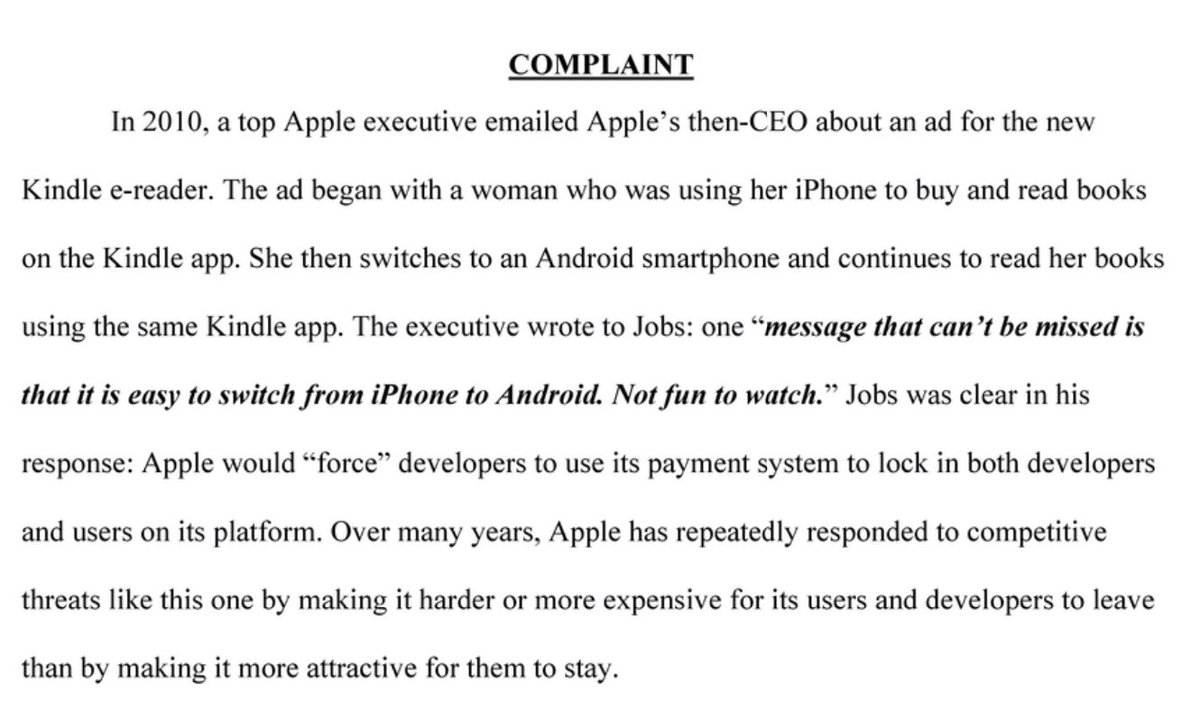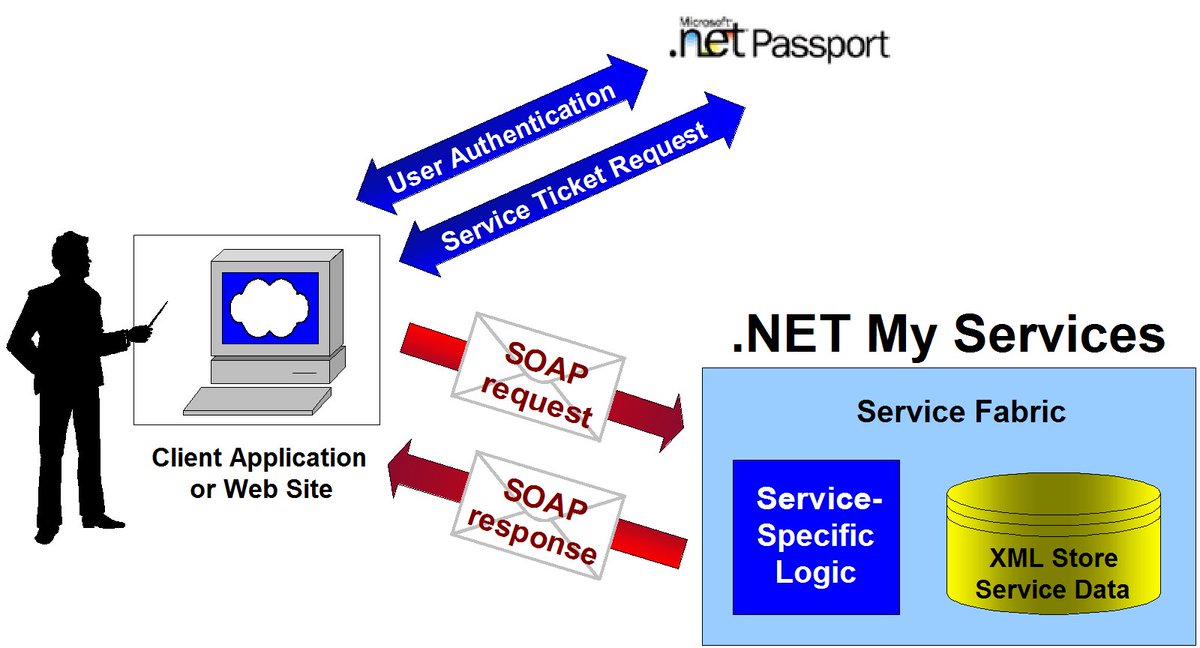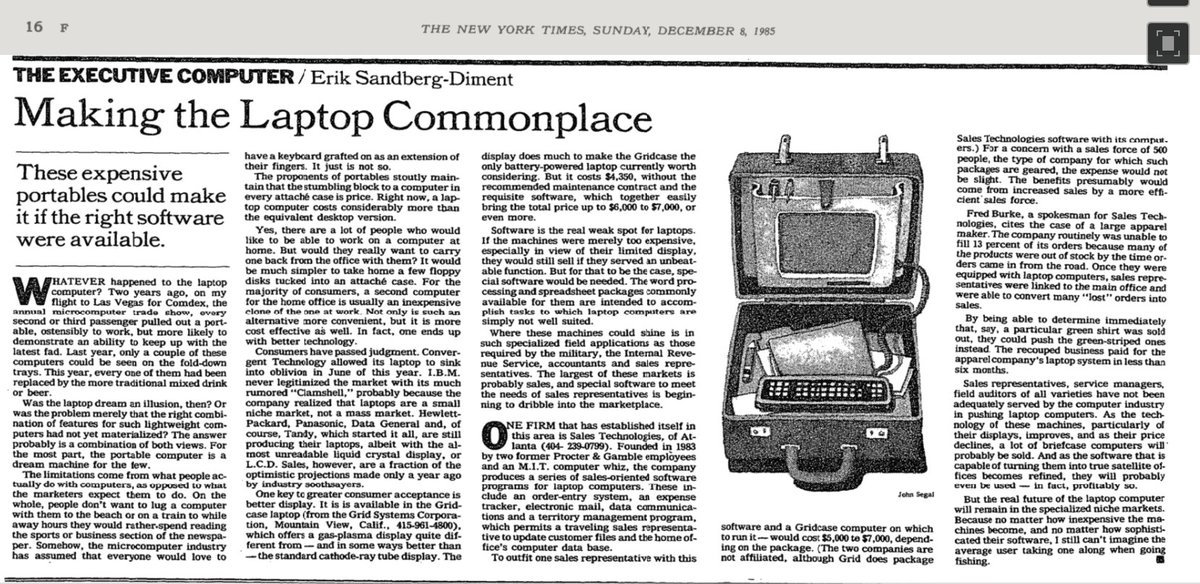Apple Event Monday!! By (no) coincidence next week is also the 30th Anniversary of Mac PowerBook launch at Comdex Las Vegas (last one in October and my first one!) 🚀
PowerBook *redefined* portables. It also solidified the Apple design group. What a story of innovation💡 1/
PowerBook *redefined* portables. It also solidified the Apple design group. What a story of innovation💡 1/

2/ To appreciate Monday and amount I believe (guessing) Mac will evolve, one should look back at the PowerBook innovation.
1990-1991 was peak vintage Apple in many ways. Mac had a high computer share 13% WW (best ever). ~14.4M PCs sold. 2.1M Macs. Windows 3.0 just a year old.
1990-1991 was peak vintage Apple in many ways. Mac had a high computer share 13% WW (best ever). ~14.4M PCs sold. 2.1M Macs. Windows 3.0 just a year old.
3/ Almost no PCs sold were portables (~300-400K). The whole problem with PC portables was that no one wanted them. They were under powered and EXPENSIVE ($5000 in 1990). While this prediction was awful in hindsight, at the time it was entirely conventional wisdom. 

4/ American PC makers (built in US) struggled with miniaturization, costs, etc. Japan was land of making things small. Sony in particular. This was at a time when many in the US were deeply concerned/feared a Japanese dominance in electronics including computers.
5/ BUT out of that came Compaq in Texas (Halt and Catch Fire) who had built a remarkable business in PC clones. Compaq came out with an early portable, “lunchbox” form factor used by insurance agents and the like.
The LTE released in 1989 was a hit. A travel weight of just 7lbs.
The LTE released in 1989 was a hit. A travel weight of just 7lbs.

6/ It ran an original PC chip but was quickly updated with the 286, then 386. I traveled to Comdex with this one. It had an exotic 3lb NiMH battery good 2-3 hours.
Ballmer used to carry 3 or 4 batteries and exhaust them all on long plane flights to Europe. Yep like 20lbs of PC.
Ballmer used to carry 3 or 4 batteries and exhaust them all on long plane flights to Europe. Yep like 20lbs of PC.

7/ Two problems. First, Windows was terrible for portables. It had no notion of power mgmt. No ability to know if the network was down or non-existent. We did all sorts of crazy stuff with AUTOEXEC to configure things. Few used Windows at all. Just 1-2-3, WordPerfect, MS-DOS. 

8/ Second, you might notice something is missing…I’ll wait…
There’s no pointing device. Because no one used Windows, these laptops did not include a “mouse”.
Also, no one had invented one yet.

There’s no pointing device. Because no one used Windows, these laptops did not include a “mouse”.
Also, no one had invented one yet.


9/ No worries. Microsoft’s small team building enabling hardware (a Paul Allen original) to the rescue (also Logitech and others). Microsoft built a track ball that literally hung off the side, gripping on to whatever plastic was there. AWFUL! Oh, there’s a kids version too 🤣🤣 





10/ PC industry experimented with all sorts of ways of doing a mouse. Compaq added a screen mounted trackball to the LTE. IBM famously introduced the pointing stick (I hated that). Later Dell had both trackpad/stick. Microsoft improved it’s heinous trackball. 





11/ Back at Apple portables were hurting. Apple had released Apple Portable the same time as the LTE. It weighed 15+lbs and was a ginormous beast consistent with the likes of Toshiba T1000 (!) DOS laptop (7+ lbs). 



12/ Apple really needed a reset and the LTE served as much as one as failure of the Portable would. There were many issues. The biggest one was that now the company was in a hurry.
Apple was strong, but the PC ecosystem was moving VERY quickly.
The mantra was TIME TO MARKET.
Apple was strong, but the PC ecosystem was moving VERY quickly.
The mantra was TIME TO MARKET.

13/ That quote is from a Case Study on PowerBook that I got to teach at Harvard Business School on sabbatical in 1998 and was super popular. You can check it out here$. store.hbr.org/product/apple-… 

14/ One of the problems Apple saw was organizationally there was no significant industrial design team. Mostly vendors. Bob Brunner had been a contractor in design & resisted full time because of a lack of commitment. This project changed that and design was a key part. The case: 



15/ The team embarked on a very fast schedule. Up until then Apple hardware was viewed as a goal of being perfect. Much of the project was hurry hurry pace. Super different than past projects.
The case study has a recreated project timeline.
The case study has a recreated project timeline.

16/ Trackpad was a huge interesting design challenge. Mac portable had a bolt on. Breakthrough idea was to add a palm rest, moving keyboard up risked making device bigger but design said “we can give a feel of smaller”. Plus repetitive stress injury prevention was big. And feet! 



17/ This and the amazing efforts at shrinking components led to a break through and iconic design.
Difficult to explain how impressive the device was— holistic—h/w & s/w together. Also “What’s On Your PowerBook” adverts. Here’s my fav w/ Henry Rollins. Some detailed 170 photos.

Difficult to explain how impressive the device was— holistic—h/w & s/w together. Also “What’s On Your PowerBook” adverts. Here’s my fav w/ Henry Rollins. Some detailed 170 photos.


18/ Reviews 💯 “Sturdy, ergonomic design, excellent weight, and a centrally located trackball make carrying and using a PowerBook a snap. Fax capabilities are closely integrated with applications software and easy to use. Remote networking software has superb security features.” 





19/ Design really proved itself in the creation of the PowerBook. After this project the design team was staffed/centralized even as Apple swung the pendulum from functional organization to product unit organization.
Models 140/170 were all in house as would be future products.
Models 140/170 were all in house as would be future products.
20/ There was also a collaboration with Sony to develop the entry model 100 (3 models introduced). This cemented a long-lasting partnership.
Originally PowerBook was a placeholder for fast time to market. But it sold 400,000 units in first year, $1 billion. NY Times (nice ad!):
Originally PowerBook was a placeholder for fast time to market. But it sold 400,000 units in first year, $1 billion. NY Times (nice ad!):

21/ This really capped off the second peak period for Apple (and high water mark for share). One thing I observed going to MacWorld was that the Apple community drove those sales, but the community was not growing. Every Mac owner bought a PowerBook, but few new to Mac buyers.
22/ Over the next few years Apple would release innovative hardware as it transitioned to PowerPC chips. PowerBooks were always better than PCs in h/w + s/w, but struggled w/raw performance especially as OS grew.
PCs didn’t catch up in portables for 20± yrs (Win 7 Ultrabooks).
PCs didn’t catch up in portables for 20± yrs (Win 7 Ultrabooks).
23/ But then came a transition to Intel and the MacBook Air. It didn’t matter that there were many PCs smaller/ lighter (including from SONY!) and many that fit in a yellow envelope. Apple had made significant improvements in OS s/w. And like PowerBook redefined a form factor. 

24/ BTW what was Microsoft doing at that October 1991 Comdex? We were busy convincing people that Windows NT would eventually ship and be better than OS/2 (this was still before the “separation”). In ‘91 it was still “New Technology”. My Comdex demo: Windows for Pen Computing 🙀 

25/ The innovation in M1++ and MacOS is so deep and such a stepwise change in computing. Monday will be crazy. Watch carefully.
PS: Code name for PowerBook project was “TIM” b/c “Time To Market” was all over whiteboards and (apparently) someone asked “What is this TIM?” // END
PS: Code name for PowerBook project was “TIM” b/c “Time To Market” was all over whiteboards and (apparently) someone asked “What is this TIM?” // END

26/ Was asked to clarify definitions of portable categories. This was a huge area where reviews/stores/press spun their collective wheels debating. I couldn't find something like this on line so here you go (I just made this up). 

27/ Another question: external monitors. Super interesting. Around 1992 is when presenting from a PC became a thing. Whenever you presented you had to inform ahead of time "Mac or PC", different non-adaptable connectors; getting analog sync working was awful!
28/ Mentioned in comment: mouse for HP Omnibook Subnotebook (~B5), a remarkable machine. First device to use all Flash memory (on PCMCIA cards). We did a special build of Word/Excel to fit on 4MB card w/trimmed down Windows 3.x. Amazing amazing. The mouse:
No SoundCloud, but I do have a Substack. If you liked this type of strategic look at where our industry came from and big moments, I’m writing about my journey inside the PC revolution. Please check it out—right now writing about HTML disrupting Office. …rdcoresoftware.learningbyshipping.com/p/051-html-opp….
• • •
Missing some Tweet in this thread? You can try to
force a refresh





















